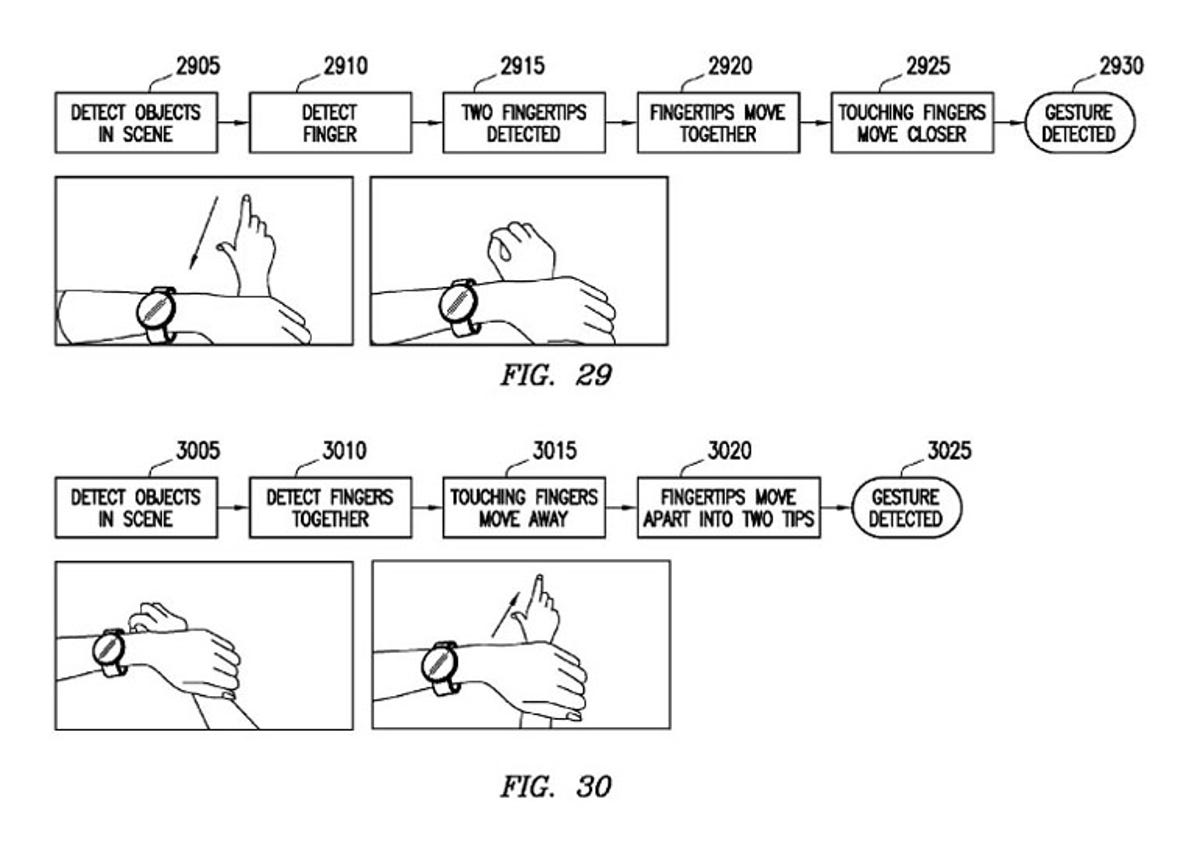
Screenshot by CNET/Nic Healey
Patent applications from Samsung suggest the company is looking at moving beyond the touchscreen for its next wearable device.
Spotted by blog SammyToday, the eight patents draw a picture of a smartwatch that uses a wide array of different sensors to accept interface options. These include a touch sensor built into the wristband, a processor to interpret mid-air gestures made in front of the camera, even the ability to recognise specific movements made with the hand the wearable is on.
One of the patents also makes reference to “a rotatable element about the touch-sensitive display” suggesting that the watch’s bezel could be an interface device. Another shows gestures being made behind the device — presumably with a camera on the band, similar to the first generation Samsung Gear — reading the finger movements.


Screenshot by CNET/Nic Healey
The various inputs would be routed through a “gesture priority decoder” that would allow the wearable to determine what movement it should pay the most attention to. Assisting in this is the ability for the device to delegate processing tasks to “one or more computing devices separate from the wearable computing device”.
In fact, this ‘delegation’ to (presumably) your smartphone, tablet or both would occur on an ad hoc basis, with the gesture decoder determining the complexity of the required task based on your inputs.
Interestingly, the patent diagrams show a round watch face, similar to Motorola’s Moto 360 and very different to anything in the Gear family. The patents were initially filed back in August 2013, so we perhaps shouldn’t read too much into Samsung’s choice of illustrations.
It all makes for an image of a wearable device that’s far more intuitive than we’ve seen so far. Taking the emphasis away from the touchscreen and making it more like a Leap Motion style input is, at first blush, a clever move that deals with some of the complaints users have about the small screen real estate on smartwatches available today.



